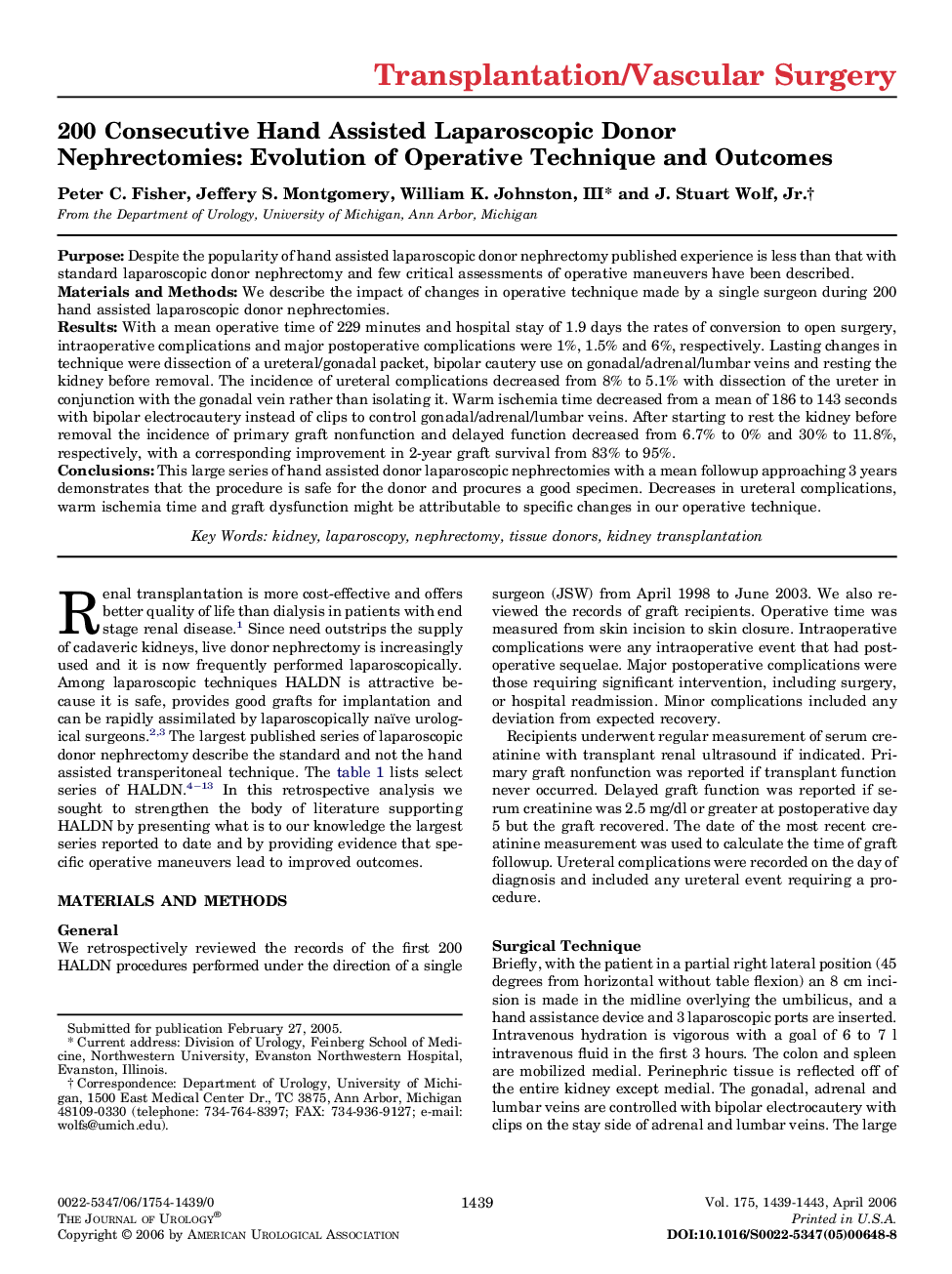| Article ID | Journal | Published Year | Pages | File Type |
|---|---|---|---|---|
| 3879811 | The Journal of Urology | 2006 | 5 Pages |
PurposeDespite the popularity of hand assisted laparoscopic donor nephrectomy published experience is less than that with standard laparoscopic donor nephrectomy and few critical assessments of operative maneuvers have been described.Materials and MethodsWe describe the impact of changes in operative technique made by a single surgeon during 200 hand assisted laparoscopic donor nephrectomies.ResultsWith a mean operative time of 229 minutes and hospital stay of 1.9 days the rates of conversion to open surgery, intraoperative complications and major postoperative complications were 1%, 1.5% and 6%, respectively. Lasting changes in technique were dissection of a ureteral/gonadal packet, bipolar cautery use on gonadal/adrenal/lumbar veins and resting the kidney before removal. The incidence of ureteral complications decreased from 8% to 5.1% with dissection of the ureter in conjunction with the gonadal vein rather than isolating it. Warm ischemia time decreased from a mean of 186 to 143 seconds with bipolar electrocautery instead of clips to control gonadal/adrenal/lumbar veins. After starting to rest the kidney before removal the incidence of primary graft nonfunction and delayed function decreased from 6.7% to 0% and 30% to 11.8%, respectively, with a corresponding improvement in 2-year graft survival from 83% to 95%.ConclusionsThis large series of hand assisted donor laparoscopic nephrectomies with a mean followup approaching 3 years demonstrates that the procedure is safe for the donor and procures a good specimen. Decreases in ureteral complications, warm ischemia time and graft dysfunction might be attributable to specific changes in our operative technique.
